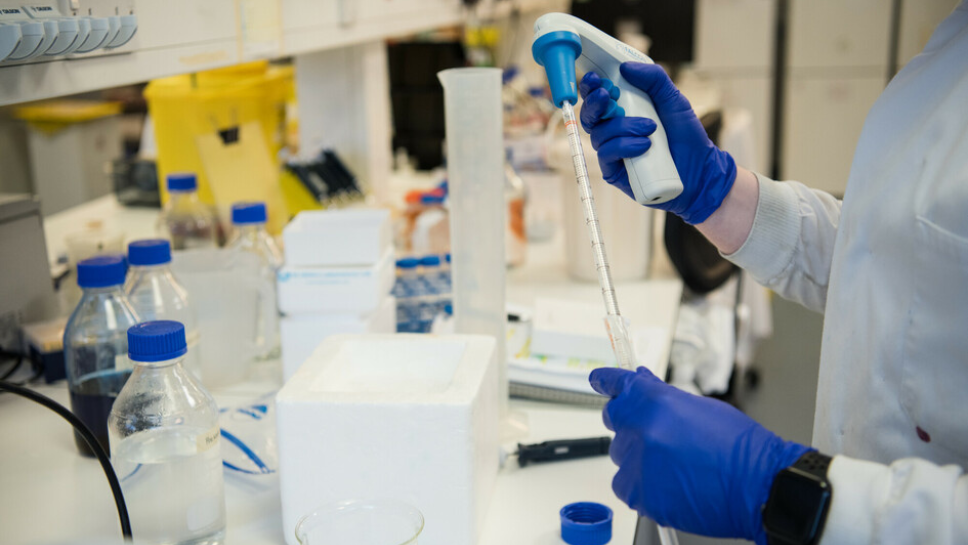
RyR1-related muscle conditions
The ability of a muscle to contract, allowing us to move, depends on various proteins working together, including one called the ryanodine receptor 1 (RyR1).
Changes to the gene that makes the RyR1 protein can cause a range of muscle wasting conditions. These include several types of congenital myopathy. They can also make someone more likely to experience ‘malignant hyperthermia’ – a severe reaction triggered by certain anaesthetic drugs that leads to muscle spasms and stiffness. They can also cause muscles to break down following tough exercise in a process called exertional rhabdomyolysis.
It's not understood how genetic changes on RyR1 lead to these different conditions, and there are currently no cures for RyR1-related muscle conditions.
What does RyR1 do in cells?
The RyR1 protein is involved in relaying the signal for a muscle to contract. Muscle is made up of long thin cells called muscle fibres. Inside each muscle fibre are groups of strings or wires (also called filaments) made up of proteins called actin and myosin. Contraction happens when these filaments pull against and slide over each other. The signal to contract is sent from the brain via nerves in the spine, and it arrives as an electrical impulse at the surface of the muscle fibre. RyR1 forms part of a ‘gate’ that sits on the surface of the cell, where it transforms this electrical signal into a chemical signal. When detecting the electrical signal, the gate opens to release calcium molecules into the interior of the muscle cell (muscle fibre). These calcium molecules act as a chemical signal telling the muscle to contract.
A new study of the effects of RyR1 mutations on myosin protein
To help understand RyR1-related conditions, a team of researchers led by Professor Julien Ochala, University of Copenhagen, and Dr Arianna Fornili, Queen Mary University of London, have investigated the effects RyR1 genetic changes have on the myosin protein − this study has been partly funded by Muscular Dystrophy UK. When genes undergo changes known as mutations, proteins will often change as well. But these changes don’t always cause health conditions. Some protein changes, called post-translational modifications, can affect the work that protein does, or where it should be in a cell at a given time. The team found that myosin proteins in the muscles of people with genetically changed RyR1 had different post-translational modifications to those in the muscles of people with unchanged RyR1 gene. They also found that these modifications could affect the function of the myosin protein: the myosin seemed to burn through energy more quickly when pulling itself along actin filaments than in those with unchanged RyR1.
What does this mean?
The research suggests that these post-translational modifications on myosin might shift the muscle towards a hyperactive state of metabolism (when energy is used up more quickly) and that this may explain some of the symptoms associated with RyR1 genetic changes. A better understanding of the molecular changes resulting from RyR1 changes might eventually help in the search for treatments for congenital myopathies and other muscle wasting conditions.
Read the full research article here.
‘What’s new in research’ is our monthly blog series featuring recent advancements in research into muscle wasting conditions. Each month, we choose a research article that will be summarised for you by our research communications volunteers, all of whom have backgrounds in various fields of research.
This piece is written by Bill Duddy. Bill is a lecturer in the neuromuscular research team at Ulster University School of Medicine. He lost his brother to Duchenne muscular dystrophy, has devoted his career to the understanding and treatment of neuromuscular conditions, and enjoys explaining science.
